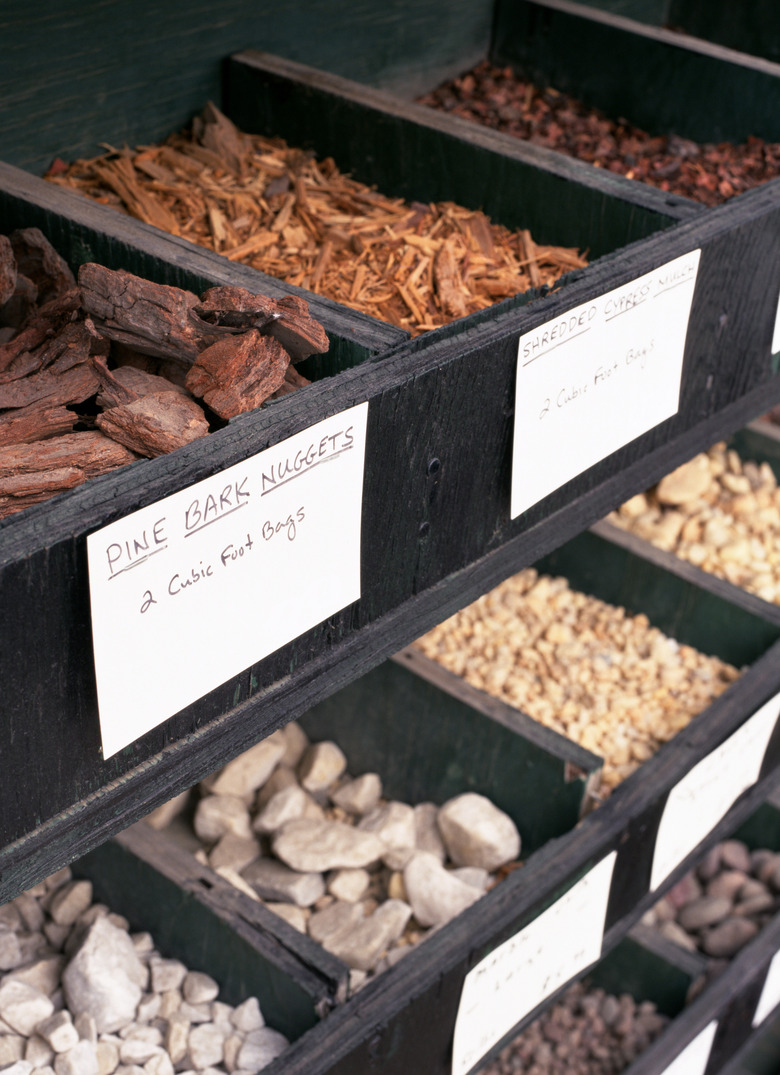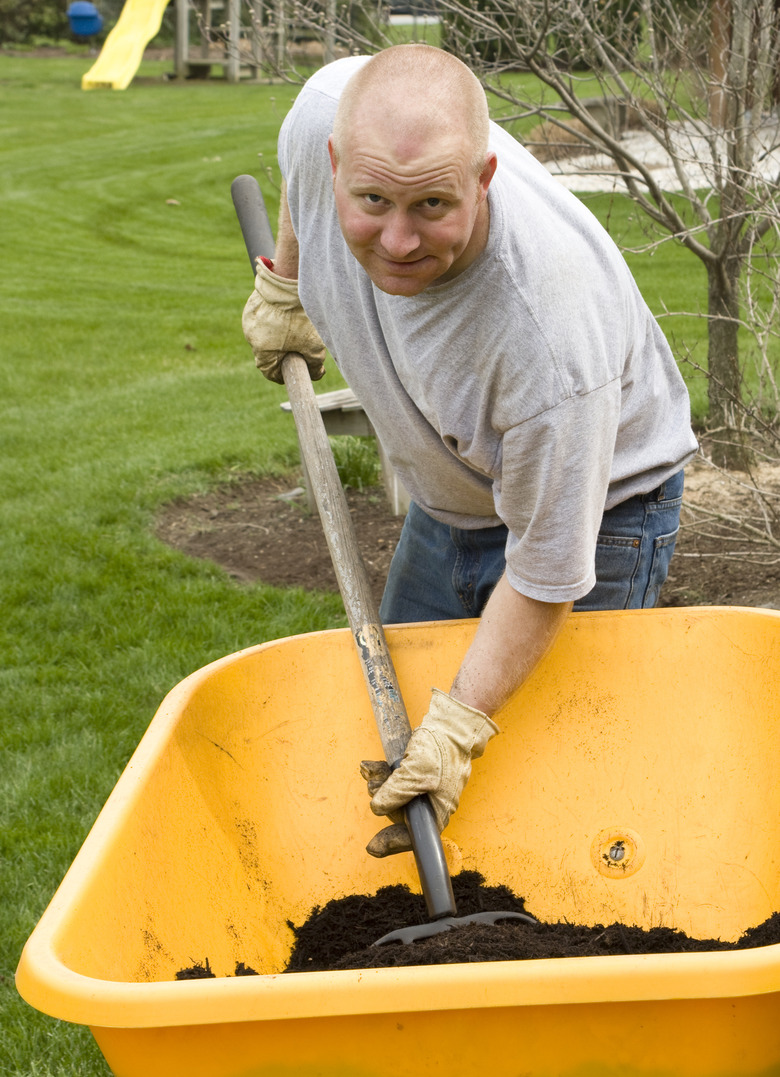How To Mulch
Applying a layer of mulch around trees, shrubs and other plantings won't solve all of your gardening problems, but they can help with a lot of them. Mulch can:
- Help suppress weeds
- Keep the soil and plant roots cool
- Retain moisture in the soil
- Reduce erosion after a heavy rain storm
- Improve the structure of the soil as they decompose (if they are organic materials)
- Help the landscape achieve a neat, finished appearance.
Not everything that is labeled a mulch can do all of the things mentioned above. The trick is to match the mulch to the application.
Organic vs. Inorganic
While many different materials can be used as a mulch, they all fall into one of two categories: those that can enrich the soil and those that don't. Mulches that can enrich the soil are organic materials, such as wood chips, shredded wood, grass clippings, cocoa bean husks, straw, and shredded leaves. Common inorganic mulches that don't add anything to the soil include pea gravel, rubber-based products and plastics.
Mulches for Ornamental Gardens and Borders
Flower gardens and other ornamental plantings are best served by organic mulches, such as shredded wood and wood chips and tree bark nuggets, because they help suppress weeds and they provide a neat appearance to the landscape. Choose these products based on how they can enhance and complement the look of your garden style. If appearance is less important than other benefits, you can use a layer of compost to mulch your plants, which will help suppress weeds, hold moisture, and bolster the nutrients in the soil better than other forms of more attractive organic mulch. You can buy small bags of garden mulch at home centers and garden centers. But for big jobs, you can purchase the material in bulk from garden centers.
At the start of the growing season when perennials are established and after planting new plants, first remove any weeds that sprouted up. Then apply three or four inches of mulch. Keep the mulch away from the stems of plants to allow air circulation. It is a good idea to use some sort of edging around gardens and borders to keep the mulch in place.
Another strategy is to combine landscape fabric with mulch. The fabric allows water to pass through it, but it discourages weed growth. Put the fabric in place and cover with a decorative mulch.
Mulches for Vegetable Gardens
While woody organic products such as bark and shredded wood work well as mulch in ornamental gardens, they aren't the best choice for vegetable gardens. The woody products do decompose, but they do so very slowly, and some rob the soil of nitrogen as they break down. The bulkier mulches get in the way at harvest and planting times.
Because how the mulch looks is not as important as some of its other qualities in a vegetable garden, organic mulches to consider include weed-free hay or straw, grass clippings, leaves, and compost.
Hay protects seeds and seedlings at the beginning of the growing season from birds and heavy rainstorms. Once the garden gets going, the hay keeps the soil cool and prevents evaporation.
Grass clippings, leaves, and compost are usually readily available. Be sure the grass is free of pesticides and herbicides if using it on the vegetable garden. Both clippings and leaves tend to clump together. So, try to dry out the clippings first and shred the leaves for best results. Compost, whether you make it yourself or purchase it, is a blend of organic materials that have already partially decomposed, so when used as a mulch, the nutrients are more readily available to the soil. A thick layer of compost used as mulch may even eliminate the need for additional fertilizers on your vegetables.
Although not really a mulch, many gardeners use plastic ground covers in their gardens. The material comes in four- or three-foot-wide rolls. The plastic helps warm up the soil before planting begins. Simply cut holes in the plastic to plant seeds or transplants. You can reduce watering chores by laying soaker hoses under the plastic. When buying the material, remember that black plastic discourages weed growth; clear plastic does not since it allows sunlight to pass through. Plastic ground covers should be removed at the end of the season and reinstalled the following year.
Apply a few inches of mulch at the start of the vegetable gardening season. At the end of the season, spread a thin layer once the harvest is in. The decomposing material will enrich the soil.
Other Mulches, Other Uses
Other products that are often marketed as mulch include pea gravel, marble dust, and other stone products. There is also mulch made from recycled rubber products. None of these materials make good mulches for plantings. They don't decompose and add anything to the soil. The stone products don't help the soil retain moisture. White stone reflects heat, which can stress plants.
But these products do make good walkways. If you are a raised bed gardener, create walks and aisles with using pea gravel between the beds. Rubber mulch is excellent for play areas.
Choosing the right type mulch can help make your gardening chores easier.

